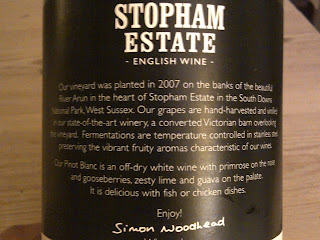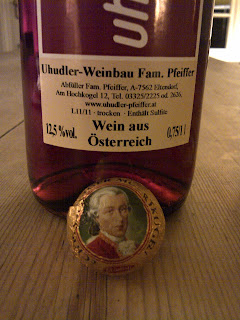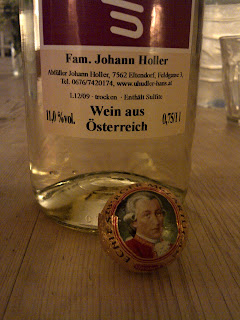Friday, 21 September 2012
Monday, 17 September 2012
How our garden grows
In 2010 we re-planted the Slotovino Thames Valley micro-vineyard with some experimental varieties where nothing had grown before. The results have been mixed to say the least. All the manuals say growth in the first year should be up to 6ft. We have barely managed half of that in 2 years but we have the excuse of being absent resulting in a complete lack of spraying, feeding, watering etc.
Nonetheless some varieties have been obliging. It is no surprise that the hybrids have outgrown the classics but we're glad we have tried both. The bible says 7 years should elapse before wine is made. We recently enjoyed a delicious English Pinot Blanc which was from a vineyard planted only in 2007 at Stopham Estate.
Quite the best English Pinot Blanc we have tasted. Surprisingly generous fruit!
Here are some photos of our vines this year, planted in spring 2011.
Rondo
Regent
Dornfelder
Fruehburgunder
Pinot Noir
Wrotham Pinot
Orion
Goldriesling
Johanniter
GM8107-3, 'Bettina'
Nonetheless some varieties have been obliging. It is no surprise that the hybrids have outgrown the classics but we're glad we have tried both. The bible says 7 years should elapse before wine is made. We recently enjoyed a delicious English Pinot Blanc which was from a vineyard planted only in 2007 at Stopham Estate.
Quite the best English Pinot Blanc we have tasted. Surprisingly generous fruit!
Here are some photos of our vines this year, planted in spring 2011.
Regent
Dornfelder
Fruehburgunder
Pinot Noir
Wrotham Pinot
Orion
Goldriesling
Johanniter
GM8107-3, 'Bettina'
Monday, 10 September 2012
Uhudler
Our eye was taken by a reference to an obscure, no make that an exceedingly obscure Austrian appellation called Uhudler because it is a throw-back to the struggles of the Phylloxera when people thought the way forward was via hybrids because the eventual solution of grafting onto American rootstocks had not yet become the accepted route.
The area is Südburgenland in the corner where Austria borders not only Hungary but Slovenia and Croatia as well. Varieties planted over 100 years ago include the reds Clinton, Concord, Delaware and Isabella and Elvira, Noah and Ripadella (white).
After filling the gap for a while while with appropriately large production, Uhudler was overtaken by Vinifera varieties coming back on stream at which point in the 1930s there was an attempt to ban the Uhudler varieties. A scare story was even put about that Uhudler had a high Methanol content - ironic in view of the subsequent wine scandals elsewhere in Austria in the mid '80s when diethylene glycol really was added to various wines.. Uhudler was then banned except for local production and consumption. This situation continued up to the beginning of the 1990s. During this time thousand of liters of Uhudler (particularly in Südburgenland ) were destroyed by wine cellar supervisors.
As with prohibition in North America this led to a certain popularity and a fashion for the wine (especially in its sparkling version) arose and spread as far as young party-goers in Vienna. Today it remains a curiosity so we ordered a bottle of Red and one of the rarer White Uhudler from Amazon, where else?
In record time the package arrived from Familie Pfeiffer and Familie Holler together with complimentary Mozartkugeln. We haven't tasted these wines yet but there is something very Gemütlich about the whole thing. If you're wondering about the name, there is no geographical area called Uhud. The wine is named after the eagle owl (Uhu) because it is said the wine makers came home after the vendange with eyes like those of that bird.
The future is still unsure for Uhudler. After 2030 a new rule will decide whether the vinyards will be allowed to remain or if they will have to be uprooted by law which would mean that the tradition of Uhudler would disappear.
Subscribe to:
Comments (Atom)














